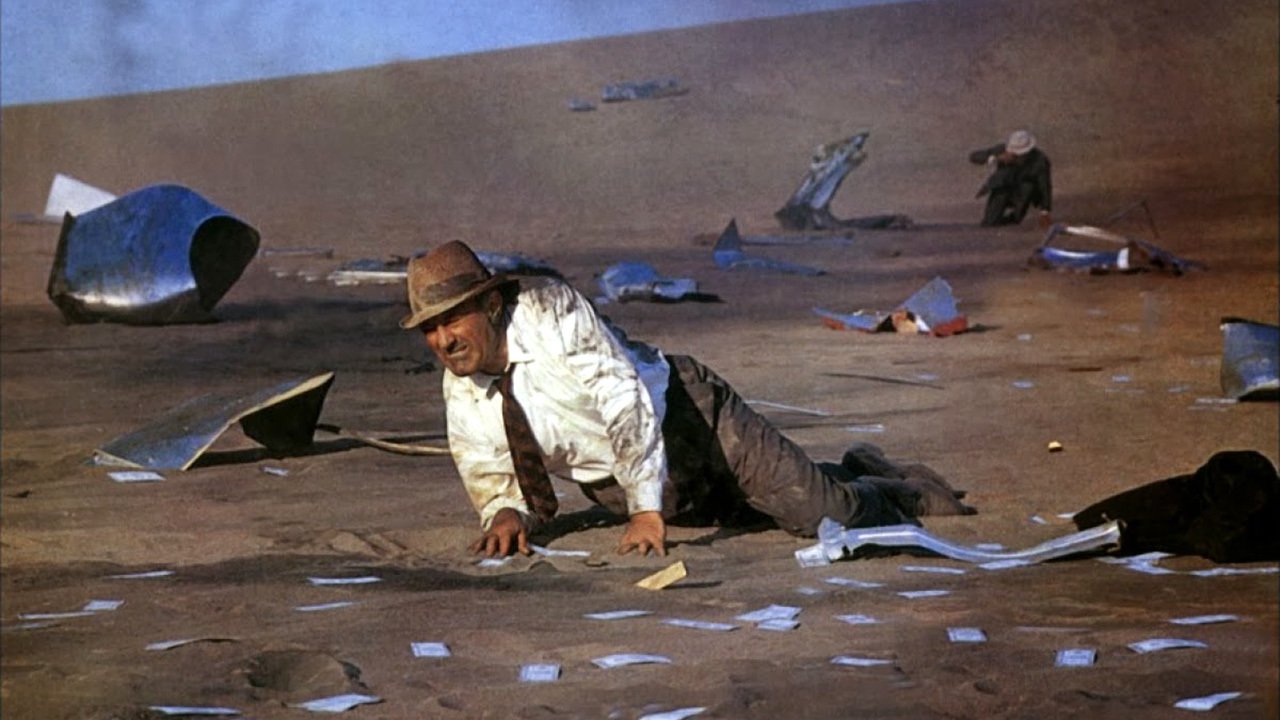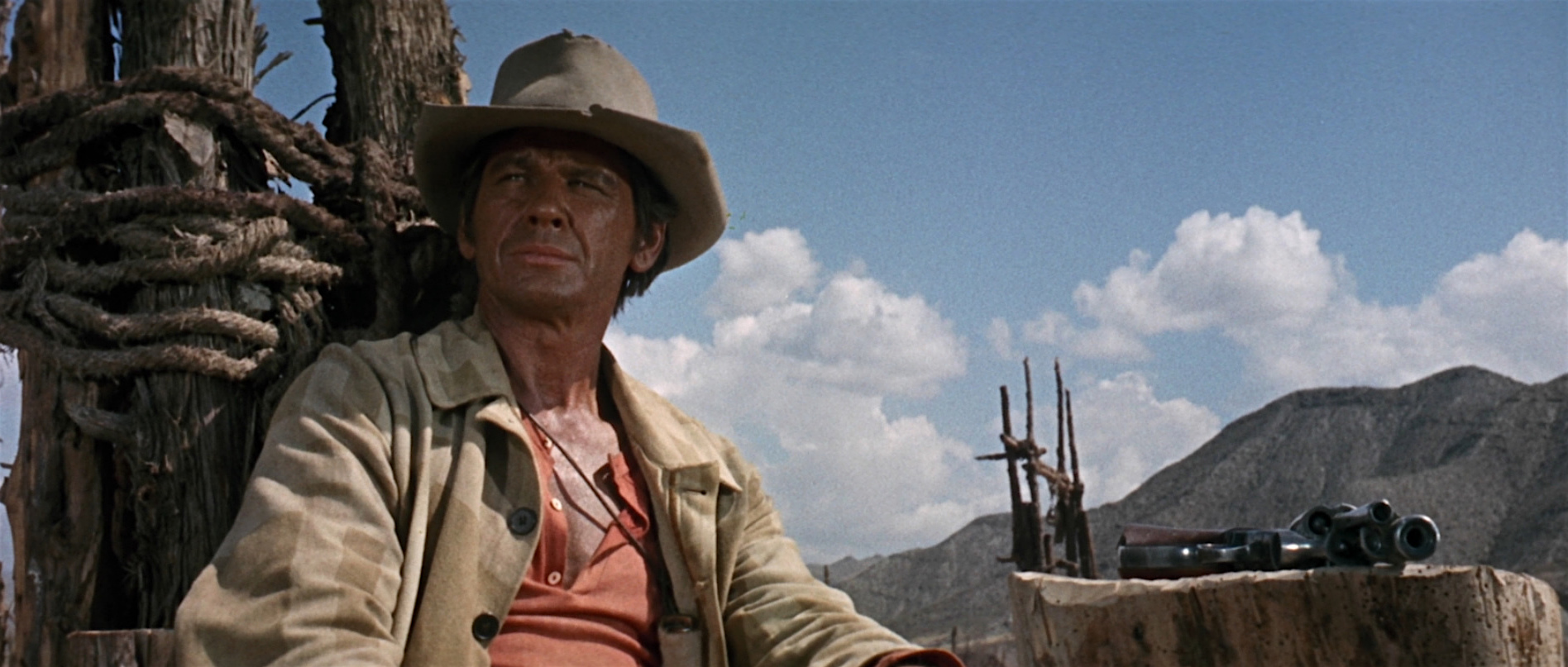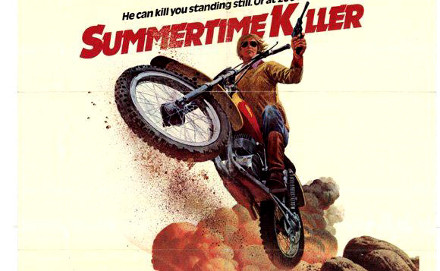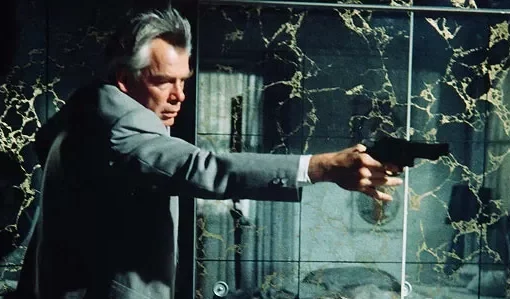I have always been fascinated by a particular sub-sub-sub genre of American Cinema, that of the European expatriate (or visitor). I am not talking about Italian-American filmmakers like Scorsese, Capra, or Coppola. I am talking about really successful European filmmakers, who at one point shortly made it to the American shores, made a film or two, and left again (or died, in Leone’s case). Now, there are not a lot of those that fit the criteria that I imagine: not very recent, famous, and cult. That’s why I find myself associating this sub-sub-sub-genre with three main names, two Italian, one Spanish, but in the comments below feel free to point out others to me. They are Sergio Leone, Antonio Isasi-Isasmendi and Michelangelo Antonioni.

First up, Antonio Isasi-Isasmendi (GCDB), probably the least known of the three, not only because his movies are not particularly main stream, but also because he was never as famous as the others – and not Italian. After making some rather successful European movies and starting his own production company, he tested the international, English-language market. Two movies of him are worth pointing out in this context, the one is the cult classic, and until recently hard to get, heist movie They Came to Rob Las Vegas (1968) with such calibers as Elke Sommer, Gary Lockwood, Jack Palance and Lee Cobb. This particular favorite of mine is a very atmospheric and entertaining crime flick that is absolutely worth checking out and finally available on-demand from Warner Brothers. I personally have great memories of catching this on TV one time, late at night, but haven’t had a chance of seeing it ever since then. The other, four years later, is Summertime Killer (1972), which only in the last couple of years has seen somewhat of a revival among cineasts, not least because the Bacalov-composed soundtrack has been re-used in Quentin Tarantino‘s Kill Bill. As opposed to the Vegas movie, this one is less star-studded and is closer to what you would call an exploitation, or drive-in movie experience. Unfortunately, after some more movies in the 70s and 80s, he withdrew from the director’s chair and has not made any movies the last almost 30 years. Bottom line: A very interesting case and two highly interesting genre movies that make for a great double feature home cinema evening for example. Or if you read this and own a movie theater, why not program a night with these two?

Next up, Michelangelo Antonioni. Especially in the art house and avantgarde cinema community, this one is quite well-known. The well-off journalist, who according to Wikipedia once worked for a fascist movie magazine in Rome, started working in the movie biz in the 1940s, and came to fame in the 60s with some high profile and successful Italian movies. He then went on to make Blow Up, in the UK, before venturing to the US and making a movie that I personally love very much and has also been an obscure, hard to find title until about three years ago, Zabriskie Point. Ironically a counter culture movie, which seems strange coming from a man who once worked for the fascist cinema mouthpiece only 30 years earlier. Zabriskie Point is a slow, quiet, sometimes observant (as many of his movies) monument to the hippie culture, anti-war protests and free love, and has quite a history. It was released in a time of leadership changes at Warner Brothers, and was close to being released with about half an hour of footage missing, most notably the notorious mass orgy scene in the desert, only to be subsequently released uncut because a new studio boss liked it. Definitely a film to check out. Later, he made The Passenger with Jack Nicholson, which I have yet to check out, but I hear is a really solid flick.

Lastly, the master. Sergio Leone. He really only made one movie in the US, aside from a few scenes for Once Upon a Time in the West, that were shot in Monument Valley. After making not three, but four, ultra-successful and influential spaghetti westerns (SWDB), and dabbling in a parody of it (My Name is Nobody), he went to New York to shoot a movie that was just as epic as his last ‘magnum opus’. Once Upon a Time in America is a mind-blowing chronicle of life in Little Italy and the story of a few kids that grow up to be gangsters. It spans several decades (nothing less you would expect from Leone), to watch it you need half a day, and even though its level of detail decreases towards the end, it is a movie that puts tears in your eyes and grips you from beginning to end. A true masterpiece, and a fucking shame that it was cut and mistreated when it came out, a slap in the face for Leone, who died shortly after, and only got the recognition it deserved when restored and rediscovered later on the Z Channel, the first classic movie TV channel in the US. Today, it’s considered one of the best movies of all times and can be watched in a nicely restored DVD or BluRay. One could only imagine how the movie business would look like today if Leone had lived longer and made more movies that would’ve changed cinema the way his other movies did. Rest in Piece, maestro, we thank you for the unforgettable moments that you have endowed mankind with through your motion pictures. Grazie.







4 thoughts on “The Europeans Are Coming! Leone, Antonioni and Isasi-Isasmendi in America”
FW Murnau (The Last Laugh), Ernest Lubitsch (Passion), Joseph von Sternberg (The Blue Angel) and plenty others in the 20ies. Michael Curtiz (Casablanca), Fred Zinnerman (High Noon), Otto Preminger, Alexander Korda, Billy Wilder were European jews among many who escaped Hitler in the 30ies to Hollywood.
Oh totally. Maybe I should’ve made it more clear what I was after. I was looking at the specific time of 60s/70s and originally I thought about these three fellas but couldn’t think of a fourth or fifth that would be similar to them (Bertolucci maybe, but he’s still very active). The others you’ve listed were mostly active quite earlier.
Nice text Seb. Keep them coming
Vitor “El Topo” Louçã